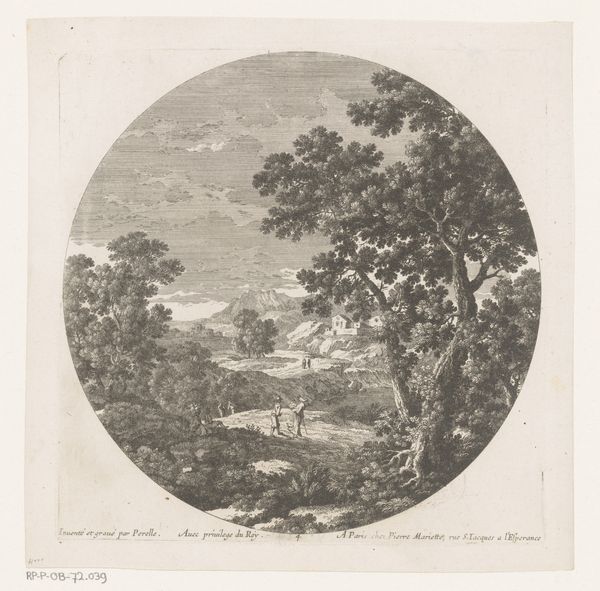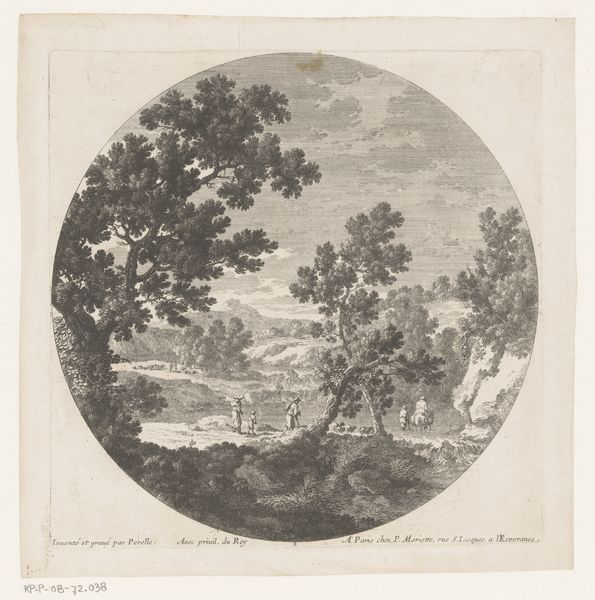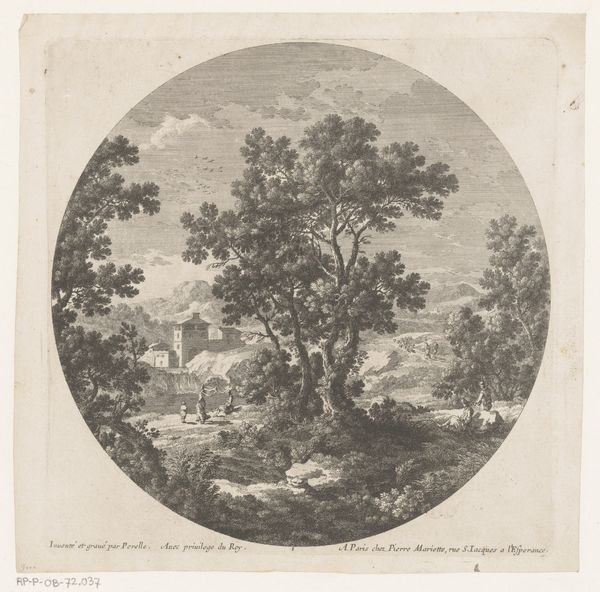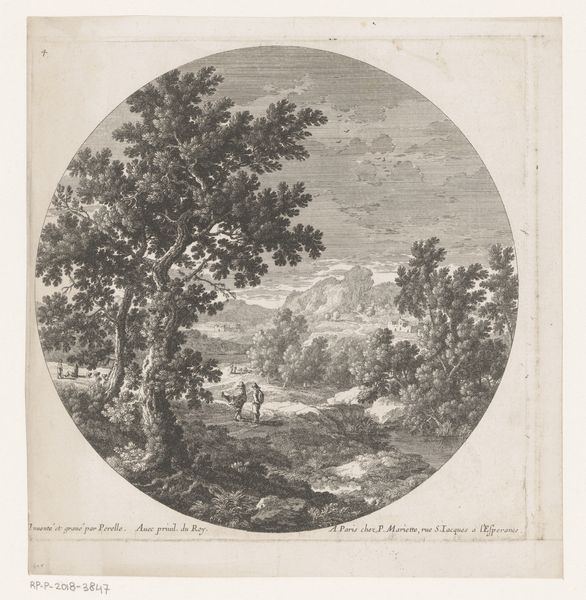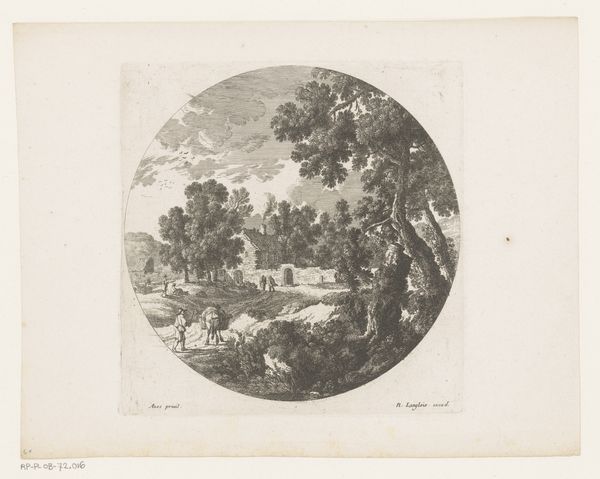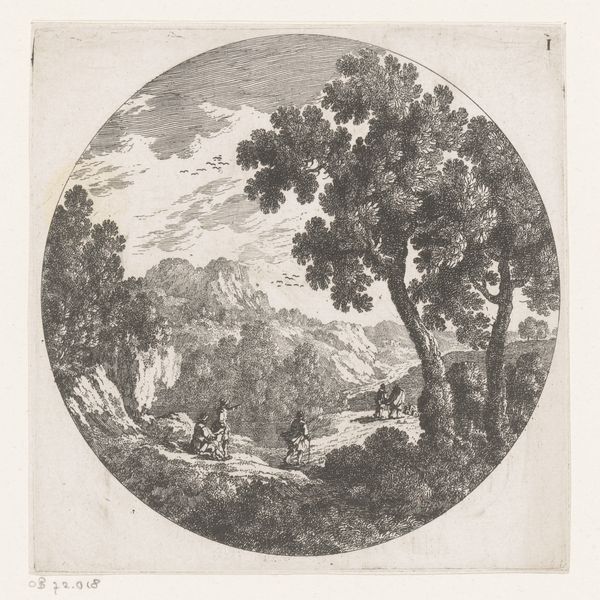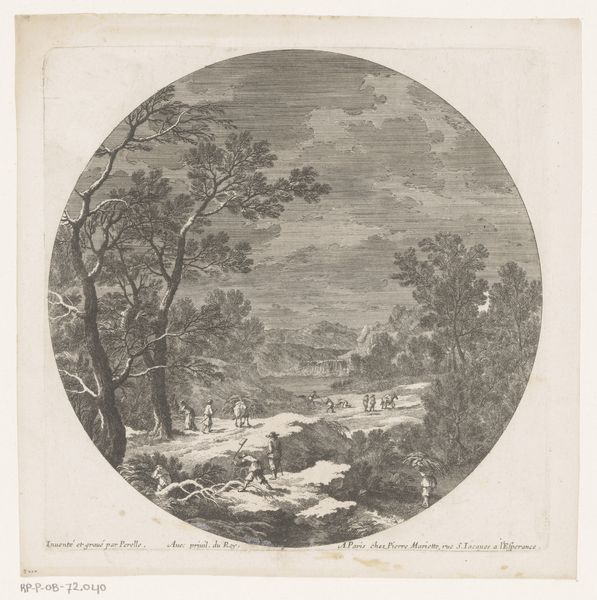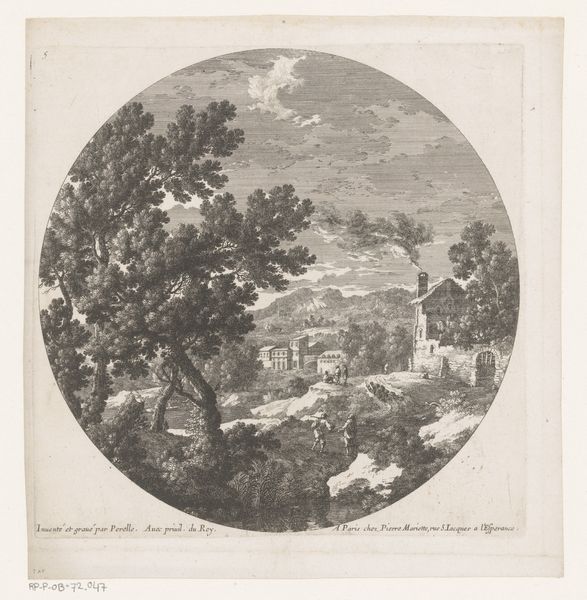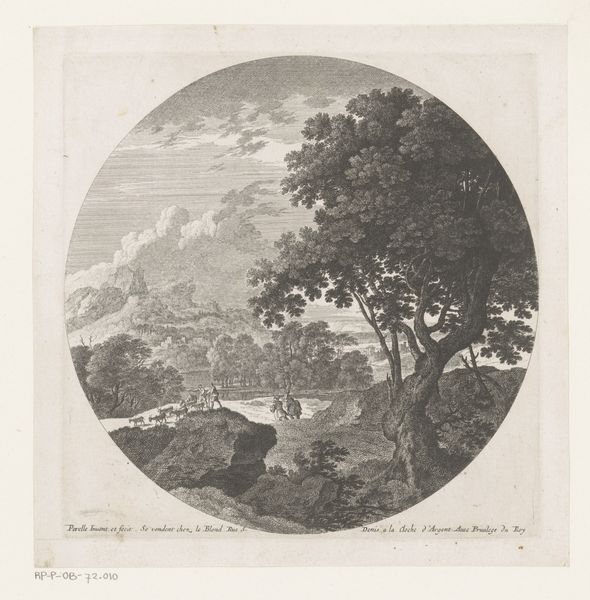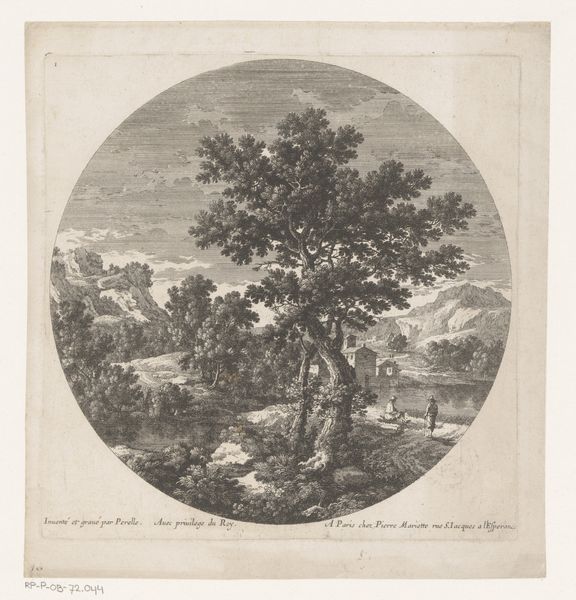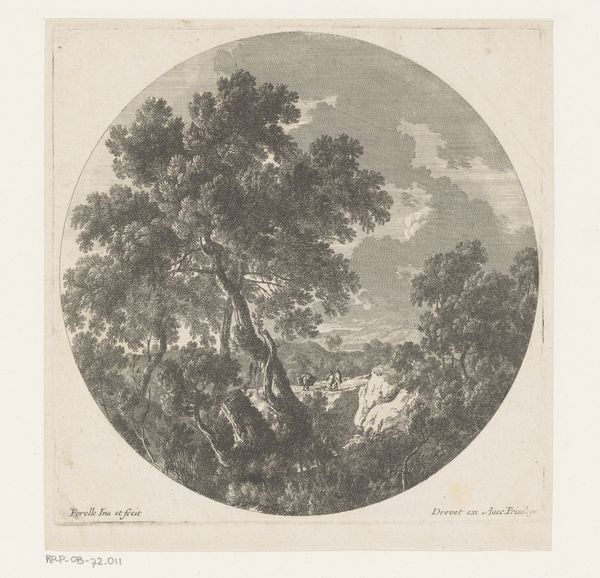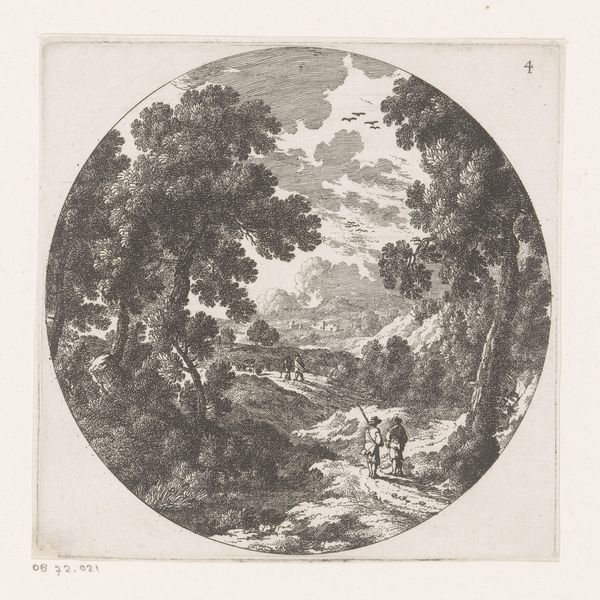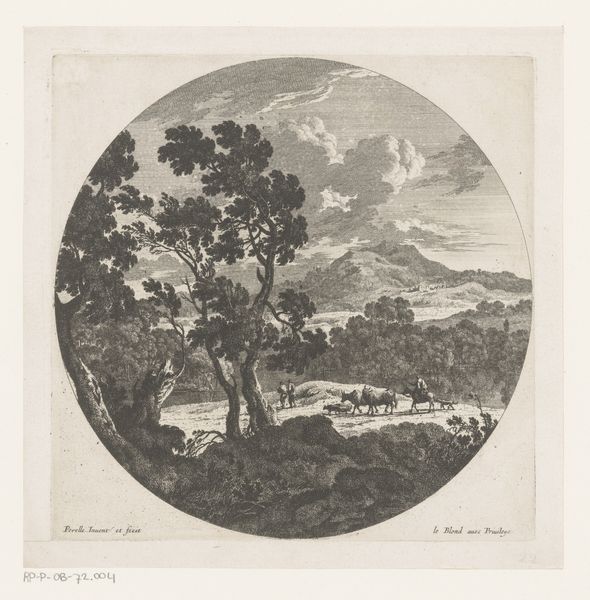
print, etching, engraving
#
baroque
# print
#
etching
#
old engraving style
#
landscape
#
engraving
Dimensions: height 210 mm, width 212 mm
Copyright: Rijks Museum: Open Domain
Curator: I’m immediately drawn into this world! It feels… both expansive and intimate, like a memory half-forgotten but beautiful nonetheless. Editor: It is, indeed, quite lovely. What you’re seeing is a landscape print entitled “Landschap met wandelaars en lastdier,” attributed to Nicolas Perelle and estimated to have been created between 1613 and 1657. The piece, rendered using etching and engraving techniques, resides in the Rijksmuseum. Curator: Ah, Perelle. Of course! There’s a certain lightness in his landscapes. I almost feel I could step right into the scene and follow those wanderers. The circular composition is so inviting, a peephole into a softer reality, wouldn't you say? Editor: Indeed. Circular formats in art during this period can be viewed through different lenses. It could emphasize a sense of contained observation or act as a symbolic mirror, inviting viewers to reflect on their relationship with nature and the human figure's place within a larger world order. The rendering style harkens to old engraving aesthetics, hinting at established visual codes while reinforcing class structures and narratives around land ownership in the baroque. Curator: Baroque landscapes, more than just pretty vistas, you mean. The people here don't appear as owners, but just part of a grand scheme. Makes you think about transience, doesn't it? A world existing far longer than we ever will. It invites a certain reverence. Editor: Precisely. Consider that prints like this, reproducible and more accessible, broadened the distribution of landscape imagery. They helped shape not only artistic taste but also perspectives on nature and its control—or lack thereof. The choice of etching alongside engraving suggests an economic element as well. Each of these aesthetic details speaks to cultural assumptions about value, leisure, and landscape representation, not just in art but within early modern society broadly. Curator: You’ve given me much to ponder! Thanks to this conversation, I see in Perelle’s image a whole world, reflecting both fleeting beauty and intricate societal forces. It's far deeper than a pleasant scene now! Editor: Likewise! Thinking through how art engages with political and social context deepens my experience too.
Comments
No comments
Be the first to comment and join the conversation on the ultimate creative platform.
